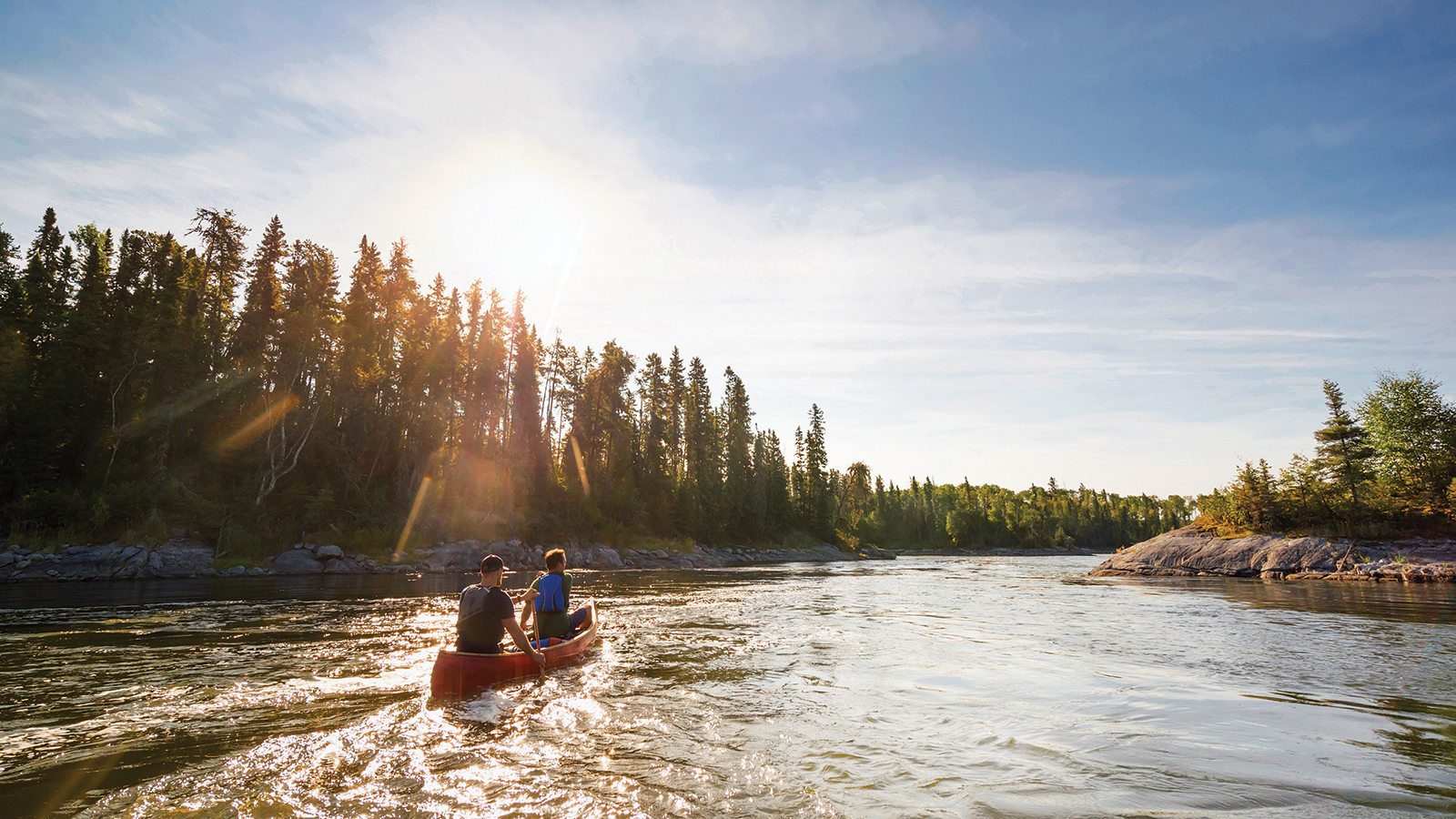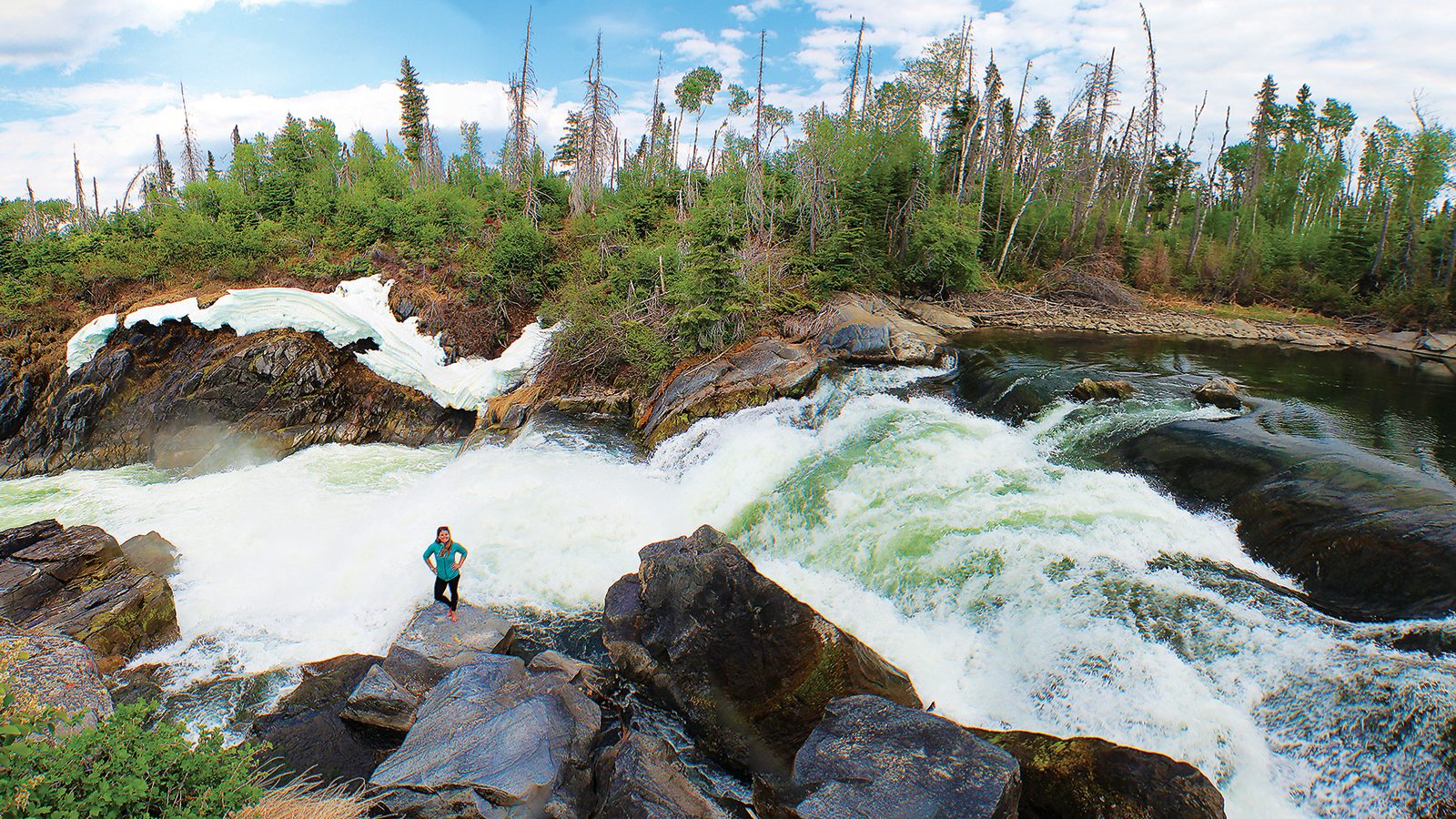Hidden deep within thick boreal forest, Lac La Ronge Provincial Park is something of a Saskatchewan secret. But it’s hard to keep a secret this size: The park is one of the largest in the province and home to more than 100 lakes. Though Lac La Ronge is often described as northern Saskatchewan, it’s actually right in the centre, about a four-hour drive from Saskatoon on the well-paved Highway 2 through Prince Albert.
The park’s rugged landscape is dominated by jack pine, spruce and larch clinging to the edges of rocky outcrops on the Canadian Shield. The air smells fresher here, the northern lights pulse brighter and the fish seem to bite harder. A little more than half of the park’s total area is composed of water; it defined the lives of 19th-century voyageurs and traders who transported furs on the Churchill River, just as it beckons today’s boaters, fishers and hikers.
I usually visit the park to canoe and camp, but this time I decide to explore it a little differently. The town of La Ronge—and its namesake lake—offers a variety of accommodations, including several fully equipped campgrounds. I skip the tent and book a room at the Harbour Inn, complete with a walkout patio leading out to the shore. I wake up before sunrise to capture a time-lapse photo of the sun breaking over the horizon as loon calls echo across the water. The fifth-largest lake in Saskatchewan, Lac La Ronge is dotted with more than 1,300 islands, most of which are only inhabited by the likes of beavers, muskrats and birds.
After that early-morning wakeup call, I go for a stroll through La Ronge. Ask locals what to see or do and their response will likely be the Robertson Trading Company. But this isn’t your typical corner store. While picking up a few snacks and groceries, customers can also admire a variety of beadwork clothing and intricately carved antlers. Raw fur pelts made from ermine, wolverine and lynx hang in the back corner. I’m surprised at how soft and supple the fur is.
Just south of La Ronge is the neighbouring town of Air Ronge. I meander into the Woodlands and Waterways Regional Visitor Centre, which also houses an art gallery and shop showcasing works by local artists. Many talented landscape photographers, including Corey Hardcastle and Scott Knudsen, are active in the area, as are crafters from the nearby La Ronge First Nation, who design and sell a selection of handmade beadwork.
Leaving La Ronge in the early afternoon, I head north into the park, past the end of the paved highway and onto the gravel road leading to the First Nations community of Stanley Mission. I make my way to Jim’s Camp, a fishing and guiding company in the area, to spend the afternoon on a motorboat tour. We explore the rich history and landscapes along the waterways of the Churchill River. The 1,600-kilometre-long river system can also be viewed on one of several kayak or canoe routes—which range from tranquil paddles to white-knuckle rides on rapids.

At the first stop along the river, I disembark to find myself at Holy Trinity Anglican Church, the oldest building in Saskatchewan and a Provincial Heritage Property. We wander up the dock to the sentinel-like structure, which sits proudly along the Churchill River across from Stanley Mission. The Gothic Revival church took six years to build and was completed under the direction of Reverend Robert Hunt in 1860.
Wooden floorboards creak underfoot in the otherwise silent chapel. Rows of symmetrical red pews line the floor beneath peaked arches and windows. I sign the guestbook while admiring the multicoloured, triple-arched stained-glass windows. They endured hardships to arrive here: The first shipment of hardware and glass was lost when canoes capsized on the last leg of the journey from a factory in England, delaying the completion of the church.
Peering outside the church through the glass panels, I see the equally colourful fence markers of the cemetery. My guide informs me that the community of Stanley Mission was originally situated around the church. Gradually, the town moved across to the south bank of the Churchill River for better access to the Hudson’s Bay Company and the road connecting the community to the rest of the province. We climb back in the boat and resume our journey down the river, pausing shortly at a rocky bluff along the shoreline. At first, I can’t spot what my guide is pointing out, but looking closer, I begin to make out the circular ochre pictographs that are camouflaged by the striping of the rocks. Incredibly, the ancient stick-figure outlines of humans and elk—painted by ancestors of the Woodland Cree who live in the area today—are still visible. Similar pictographs can be found at locations throughout northern Saskatchewan and are evidence of the spirituality practised by the Cree.
Less than a 20-kilometre boat ride from town, we arrive at Fisher Rapids near the base of the 10-metre-high Nistowiak Falls. Having visited the area by snowmobile last winter, I’m curious to see one of Saskatchewan’s highest waterfalls set against the green hues of summer.
The falls thunder over a rock ledge between Iskwatikan and Nistowiak lakes. I hike the well-trod trail to the viewpoint at the top of the falls. It’s a beautiful if somewhat precarious perch: There are no railings or safety chains to block the view of water pouring over the cliff face. The falls are even more impressive now than during my ice-covered visit, and I happily spend more than two hours snapping photos while watching water rush past and flow into the river.
A half-hour boat ride back to Stanley Mission and I’m on my way to La Ronge for another night. I’ll be returning to Saskatoon the following morning. The trip hasn’t even ended, yet I already find myself planning and anticipating next summer’s getaway to Lac La Ronge Provincial Park—and the nearly limitless adventures waiting within the boreal forest of Saskatchewan.
